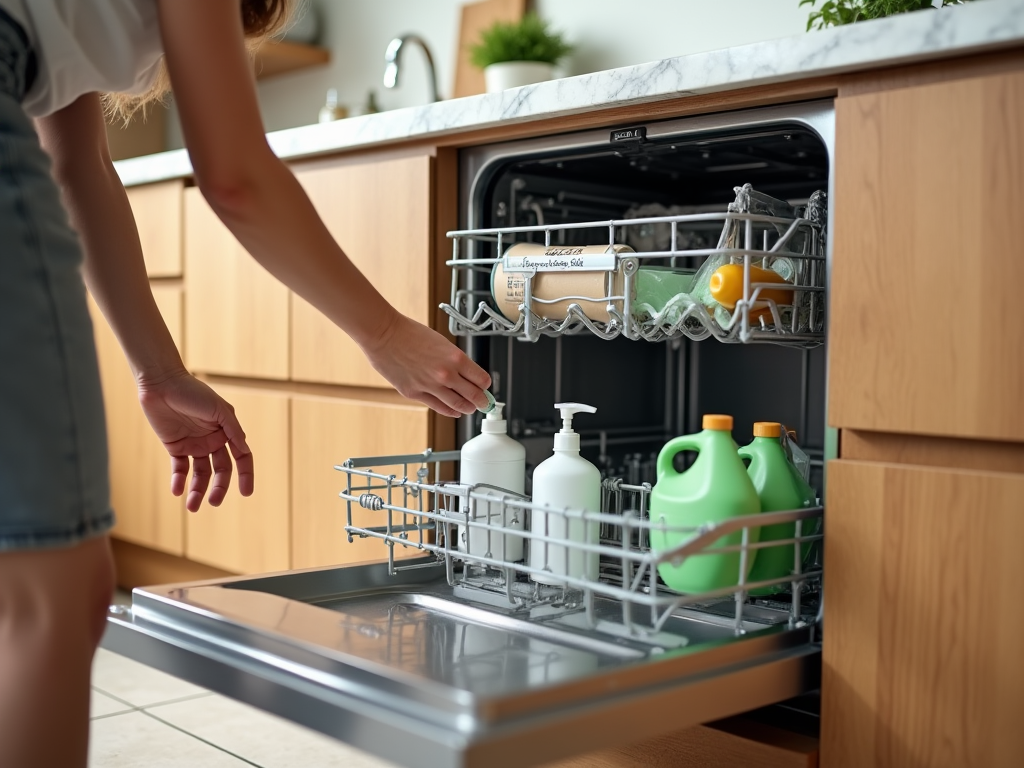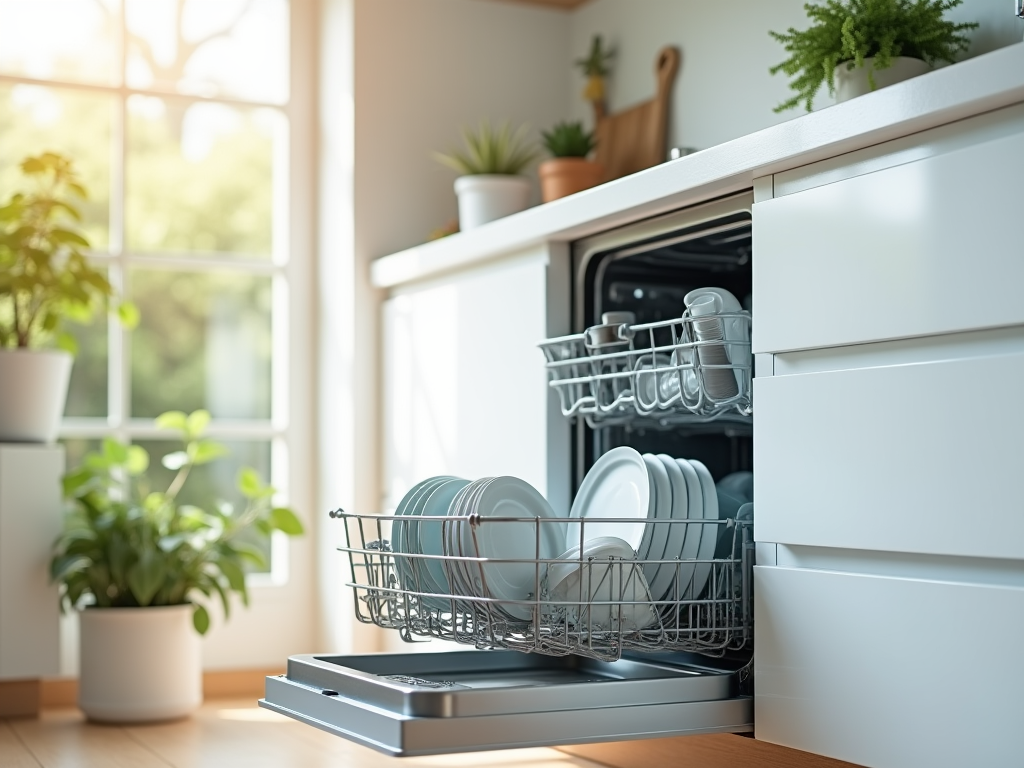Your dishwasher is not just a convenience; it’s a vital appliance that keeps your kitchen running smoothly. However, when mold and stains make their unwelcome appearance, it can feel like an uphill battle. The tinted walls and musty odor can be concerning, particularly when you’re relying on this appliance for clean dishes. Fortunately, tackling these issues is easier than it seems, and understanding how to effectively clean your dishwasher can restore its condition. With the right approach and a little elbow grease, you can ensure your dishwasher remains a germ-free zone.
Mold often proliferates due to moisture and food residues left behind. Understanding why it happens is the first step in prevention. By regularly addressing these problems, you not only improve the hygiene of your dishwasher but also extend its lifespan. It’s time to delve into the various methods and supplies that will help you conquer the grime lurking in your appliance.
Understanding the Problem

Keeping your dishwasher clean goes beyond aesthetics; it’s essential for your health and the efficiency of the machine. Mold growth can be exacerbated by factors like high humidity, leftover food particles, and even improper air circulation. Over time, as these unwanted elements gather, they can lead to a less effective cleaning cycle and potential health risks. Mold may create ill effects if ignored, such as triggering allergies or respiratory issues.
Recognizing the different types of stains or discoloration can be just as important as addressing the mold itself. In some cases, you might find yellow or brownish stains, often resulting from minerals in the water supply, or even rust from components within the dishwasher. Being aware of these issues will guide your cleaning process and help tailor it to the specific problems at hand. In the next section, we’ll go over exactly what you need to tackle these concerns.
Essential Supplies for Cleaning Your Dishwasher

Before initiating the cleaning process, you’ll want to gather some essential tools and supplies. Having everything at hand will make your cleaning experience smoother and more effective. Here’s a concise list of items that will help you on your journey to a pristine dishwasher:
- White vinegar
- Baking soda
- Soft cloths or sponges
- Toothbrush or small scrub brush
- Dish soap
- Rubber gloves (optional)
Utilizing these common household items not only ensures a thorough cleaning but is also safe for the environment. It’s surprising how effective these simple ingredients can be, especially when used strategically. Now that we’ve prepared our supplies, let’s move on to the actual cleaning process.
Step-by-Step Guide to Cleaning Your Dishwasher
Preparing for Cleaning
Cleaning begins with preparation. Start by removing all dishes, utensils, and racks from the dishwasher. A clear space allows you to access all areas of the appliance, ensuring no corner is overlooked. After removing the items, check for any food debris or larger objects that may have slipped through the cracks and lodged in the appliance. Make sure to set aside time for a comprehensive cleaning session, as this will yield the best results.
Cleaning the Filter
The filter is crucial in maintaining the dishwasher’s overall efficiency. To clean it, locate the filter at the bottom of your dishwasher. Gently remove it and rinse it under warm water to dislodge any food particles and grime. A little brushing can go a long way; use a soft brush to scrub off stubborn stains. Here, it’s essential to regularly perform this task as it can prevent clogs and reduce the risk of mold growth.
| Cleaning Method | Purpose |
|---|---|
| Vinegar Cycle | Eliminate odors and kill mold |
| Baking Soda Boost | Enhance freshness and cleaning |
| Regular Maintenance | Prevent future mold and stains |
Now that we’ve prepped the dishwasher, let’s dive into removing the mold and stains with our natural cleaning agents. Keeping a consistent schedule in using these methods is important to ensure effectiveness.
Removing Mold with Vinegar and Baking Soda
The Vinegar Cycle
A classic remedy for killing mold is white vinegar. Start by pouring a cup of vinegar into a dishwasher-safe bowl or measuring cup and place it on the top rack. Run a hot water cycle; the steam and vinegar work together to eliminate odors and kill residual mold. The process only takes a few minutes but significantly boosts efficiency. This method is not only simple but also environmentally friendly, cutting down the need for harsh chemicals.
The Baking Soda Boost
Once you’ve completed the vinegar cycle, it’s time to introduce baking soda into the mix. After cleaning out the vinegar, sprinkle one cup of baking soda across the bottom of the dishwasher. Then, run a short, hot water cycle. This additional step will enhance cleaning and further freshen up the appliance. With both vinegar and baking soda, you have a dynamic duo tackling mold and stains effectively.
Regular Maintenance Tips
To maintain the cleanliness of your dishwasher, consider the following regular maintenance tips:
- Wipe down the door seals and hinges regularly.
- Leave the dishwasher door ajar after use to promote airflow.
- Run the dishwasher regularly, even if it’s empty, to maintain cleanliness.
Implementing small, consistent actions can greatly reduce the buildup of dirt, mold, and stains. Prevention is key, and regular upkeep will save you time in the long run. Let’s wrap up this article with a final summary and some frequently asked questions.
Conclusion
Cleaning your dishwasher of mold and stains may seem daunting, but it is a manageable task when approached with the right methods. Using natural cleaning agents like vinegar and baking soda not only facilitates a deep clean but also ensures a more pleasant kitchen environment. Remember that regular maintenance is just as crucial as the cleaning itself; by staying proactive, you can keep mold and stains at bay. Your dishwasher will not only look cleaner but will also perform better, ensuring every dish comes out sparkling.
Frequently Asked Questions
- How often should I clean my dishwasher? It’s recommended to clean your dishwasher at least once a month to prevent mold and buildup.
- Can I use bleach to clean my dishwasher? It’s best to avoid bleach as it can damage the dishwasher’s components. Stick to natural cleaners like vinegar and baking soda.
- What should I do if the mold persists? If mold continues to reappear, check for hidden leaks or standing water, which can create a breeding ground for mold.
- Is it necessary to clean the dishwasher filter? Yes, regularly cleaning the filter is crucial for the dishwasher’s efficiency and helps prevent clogs and mold growth.
- Can I clean my dishwasher with commercial cleaners? While there are commercial dishwasher cleaners available, consider natural alternatives for effective and safe cleaning.



